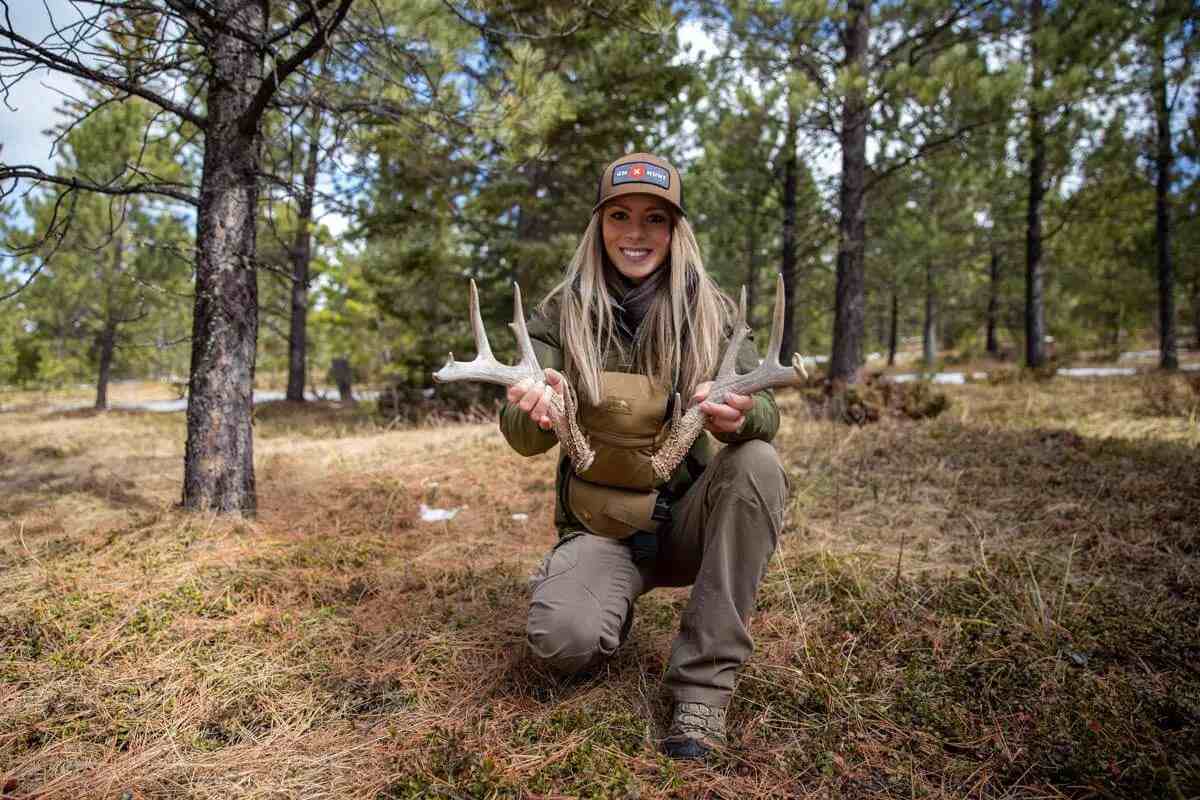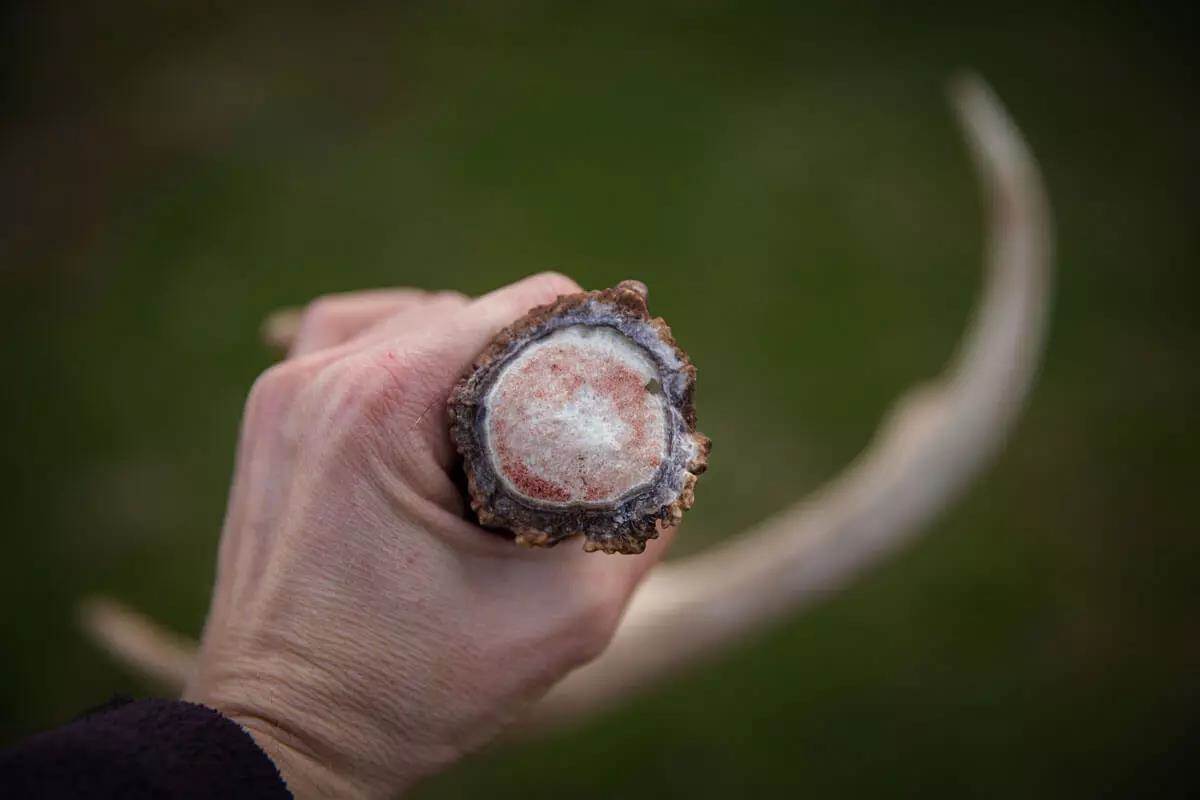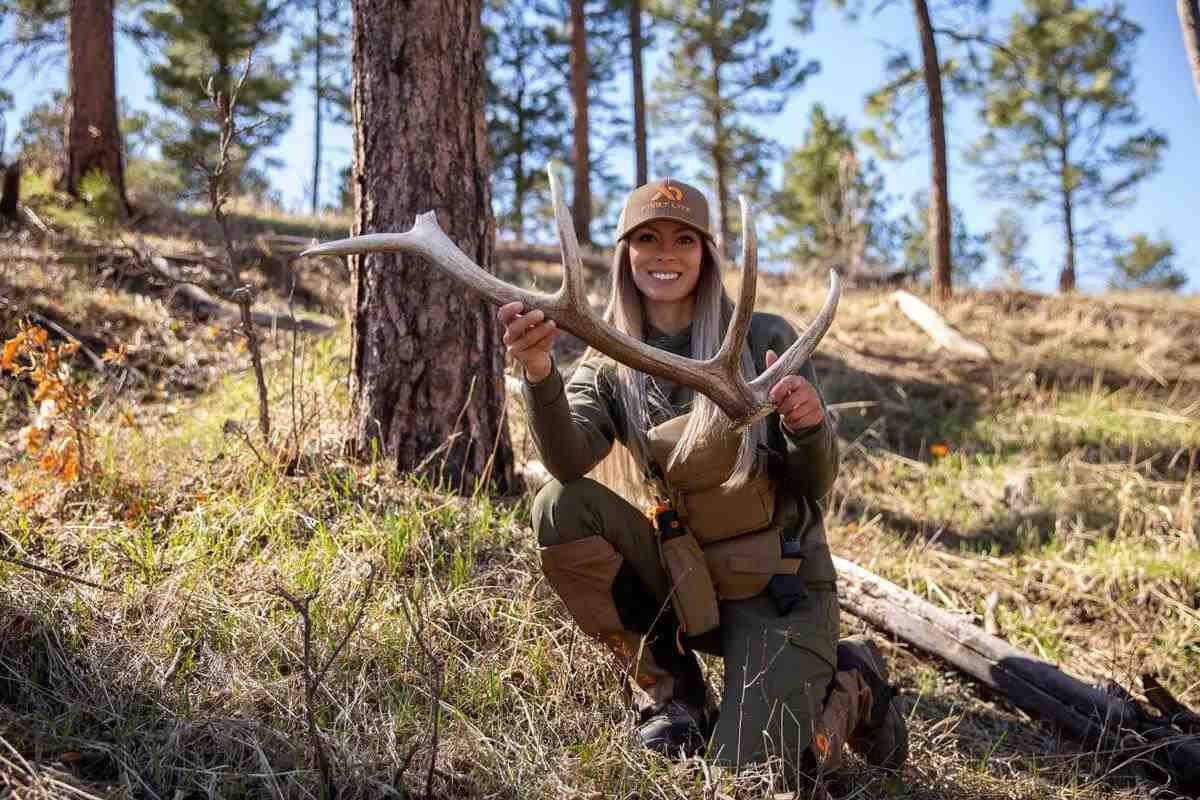
(Photos courtesy of the author)
Shed hunting has become extremely popular across the country in recent years. It’s a good way to get exercise, scout, and have fun with friends and family. But finding antlers is a little more than just walking around the woods and hoping you will stumble upon white gold. There are a lot of tricks to the trade and techniques that will definitely help you become a better shed hunter and have more success.
The Right Time of Year
The biggest question for many people is when they should start shed hunting? Well, the honest answer is that it depends on what area of the country you’re in, what species you are shed hunting for, and the regulations your state may have in place. For whitetails, normally it’s plenty safe to start walking areas in mid- to late-March. A majority of bucks have dropped by that point 90 percent of the time. Some people, however, choose to begin shed hunting in February — especially on public lands — in an attempt to beat others to the punch.

Different facors such as the weather or possible injurues can force bucks to lose antlers early or or keep them a bit later than usual. Extreme cold with a lot of snow will put an extra amount of stress on a whitetail tending to make them shed earlier. Bucks with injuries will always tend to shed a lot earlier. Some bucks I’ve watched — regardless of the conditions — will always shed around same time every year. One buck in particular I had on camera for several years always dropped in January. Another buck I had was always the last deer to be carrying antlers each year, which was normally into the end of March. Each whitetail is different, and each state has different winter conditions, making bucks shed at all different times.
Food Sources
I’d have to say food sources are the number one location that I have found sheds. During the winter months bucks are on recovery from the rut and food is limited, so if you have a food source, this is a good place to start.

Standing corn fields, alfalfa/clover fields, supplemental feed locations, and food plots are all prime areas for locating sheds. There are also food sources though that some tend to forget about. Parts of the mid-west have an abundance of honeysuckle, which depending on the kind is considered an invasive species, but does act as a great food source for deer in the winter due to it staying green all winter long. I have found that when nothing else is green, or if there is a lot of snow, the areas with honeysuckle are demolished. I have always been able to find sheds in and around areas where deer are feeding on the vine.
Bedding/Thermal Cover
Bedding areas, bedding points, and thermal cover are my next favorite areas to look for sheds. When whitetails are not feeding they are usually bedded up. Thick, briar patch areas are inviting places for whitetails to bed, as well as under autumn olive patches, honeysuckle, etc. In terms of thermal cover, especially during snow, pine and cedar thickets provide really good cover from the harsh winds and elements. I use the onX Hunt app and can locate these thermal cover areas from my phone by viewing the “Leaf-Off Imagery.” Since pines and cedars stay green all year round, you can easily spot these areas directly from your phone or computer without having to step foot in the woods to search for them.

Whether I’m shed hunting out west for elk or shed hunting in the mid-west for whitetail, bedding points and southern facing slopes are two keys locations I always find success. During the winter months warmth is key, so locating southern facing points, ridges, or slopes that obtain a lot of sun throughout the day are areas I spend most of time searching. Again, you can utilize a mapping app to easily find these locations and drop pins on specific areas you want to search before leaving the house.
When it comes to bedding points, it’s important to remember that deer/elk are always on the watch for predators and situate themselves in areas with a good vantage point with the wind at their backs so they can see or smell any predator that may be coming. Knowing this, I’ve been very fortunate to find many whitetail sheds in these locations where they have bedded down with good sightlines.
Travel Areas
Locating trails and travel areas between food and bedding is another key location to focus your time. Following heavily used trails, locating common creek crossings, and finding fence crossings have all proved themselves as being top areas for shed antlers. I’ve found numerous antlers on trails over the years, whether it be one crossing a fence or jumping a creek, or along a ridge. In 2020, I found one of my largest sheds to date on a fence crossing going into an alfalfa field. Be sure to never overlook these kinds of places!
Best Days to Look
Oddly enough, there are some weather conditions that make looking for antlers a lot easier than others! My favorite conditions are cloudy or rainy days. When it’s extremely sunny out you tend to walk right by antlers due to the sun bring directly in your eyes or the glare it creates. If you have to shed hunt on a sunny day, try to keep the sun at your back and walk at a slower pace.

Cloudy or rainy days tend to make antlers pop. Your surroundings are dull and dark so the white antlers tend to stick out more. Rainy days even better, as they really make the antlers shine compared to everything around them. Regardless, it’s important to move slow and always look at an area from different angles. Remember that from one angle an antler cannot be seen, but at another they will be show up without much effort.
There are many tactics that go into shed hunting that can really up your success, but remembering to be patient and have fun with it is always key. Shed hunting has always been a good way for me to build a story with a particular whitetail and has helped me tremendously from time to time in planning for the next season. So get out there, put in the miles, and good luck!









